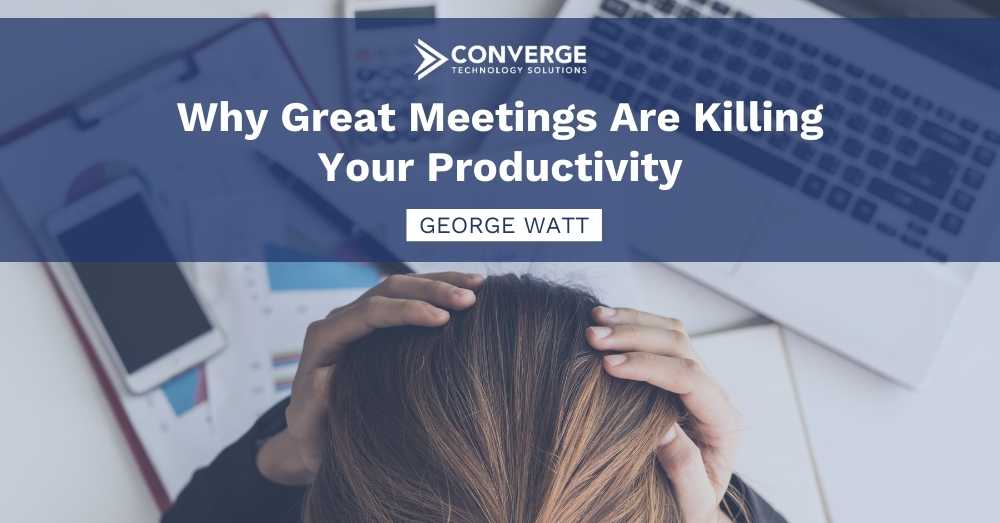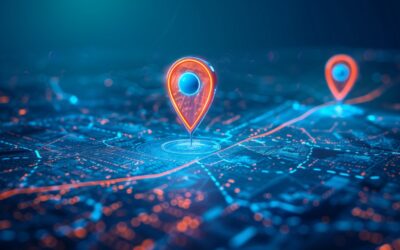There’s nothing like a bad meeting to ruin your productivity, and sometimes your day. Though, without a deliberate approach to collaboration, even great, productive meetings can be silent – and deadly – productivity killers. What’s tricky about this is that it has nothing to do with what happens during the meetings.
More than ten years ago I read a post in which Y Combinator’s Paul Graham declared that managers and creative people have a dramatically different cadence to their work. He asserted managers tend to schedule brief meetings, usually 15- or 30-minutes in duration, where they make a decision and move on to the next meeting. In contrast, “makers” – people involved in creative tasks such as software engineering, design, or writing – often require at least a half day or more to make meaningful progress. He explained that this difference created a productivity-killing conflict when a manager scheduled meetings in the middle of a maker’s creative time.
Ugh! There goes my day!
If you are a maker, I’m sure you’ve been there. Someone schedules a meeting in the middle of the morning and, just as you are falling into your creative flow, you have to stop to attend it. When you return from your meeting it can be difficult – sometimes impossible – to get your creative flow back. So, that one ill-scheduled meeting has just destroyed your morning – and perhaps your creative output for the entire day. What’s worse – sometimes you never quite achieve the same level of creative flow.
“I can’t get anything done during working hours.”
When I first read Graham’s article, I was both a manager and a maker. I was working an insane number of hours every week, and I was trying to figure out why I “couldn’t get anything done” during working hours. Paul’s article made me realize that my question should have been, “Why can’t I complete creative (maker) tasks during working hours?” The answer was too obvious.
I was playing checkers

My calendar looked like a chessboard, with brief meetings scheduled throughout the entire day, every day. I had scheduled every day of every week like a manager. I had plenty of time to address creative tasks, though it was spread throughout the week in small increments. Too small for me to complete any of those tasks. Furthermore, context switching back into the creative tasks was consuming most, or all, of those small time blocks.
Simple, deliberate changes to my schedule made a huge difference. I was working far fewer hours, getting much more accomplished, and the rest I gained led to much higher quality in both my manager and maker roles. Then I had a thought that gave me goosebumps.
I’m sinking the team!
I was doing it to our team. I had been scheduling meetings with them based upon nothing other than when we had an open time block. The team – and especially its leaders – were suffering from the same productivity issues I had been wrestling with, and much of that was my fault. That hurt. A lot.
A guiding light
After I apologized to the team, we created some guidelines for scheduling meetings that made an enormous difference in our mental state, our morale, and our productivity. Though these were more etiquette than policy, our agreement included things like scheduling meetings first thing in the morning or at the end of the day and filling them in adjacently from there. There were certain half-day time blocks where we tried to avoid meetings altogether, and others where we tried to place meetings together. (e.g.: Let’s schedule meetings on Monday mornings whenever possible.)
It’s OK to say “no”
That largely addressed our issues. Though we still had challenges when people from other groups scheduled meetings with us. We did two things to address this. First, we learned that most people are not insulted when you suggest an alternate time for a meeting, and most will accommodate it. We also learned that maker times were often scheduled by those outside the group simply because they were the first free time block the scheduler encountered. In response we began blocking maker time in our calendars.
We weren’t inflexible. Sometimes we had to break our own protocol. Though we did not have to do that too often. When we did, we made sure to ensure we also rescheduled our maker time. In addition, simply having the protocol made us think differently about scheduling, and this had a significant impact on our productivity, morale, and well-being.
Play Chess!
Have a look at your calendar. If it looks like a vision from “The Queen’s Gambit”, some simple guidelines may be as life changing for you as they were for me:
- Play Chess: Be deliberate, plan ahead, and set team guidelines
- Ensure you reserve large blocks of time for creative tasks
- Monitor your creative rhythm, and schedule maker time when you’re most productive
- Be considerate of other makers when scheduling meetings
- Don’t be afraid to suggest an alternate time for a meeting someone else requests
- Own your calendar, don’t let it own you
- Consider adding meeting etiquette to your agile working agreement
A deliberate approach to scheduling meetings that accounts for the differences between manager and maker time can make your calendar a strategic weapon. Failure to do so points the weapon at you.
About the Author
George Watt – Partner, Strategy and Innovation Practice
Becker-Carroll, a Converge Company
A transformative leader, George has spearheaded initiatives that have enabled businesses and global enterprises to address complex technology problems, deliver new business benefits, and drive millions of dollars in savings and productivity gains.
He has delivered innovations of his own such as a knowledge base for a neural network-based predictive performance management solution, one of the earliest private clouds (2005), and a lightweight event management agent.





